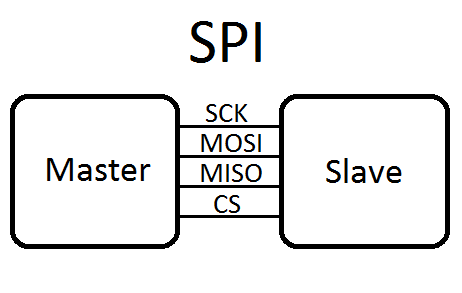By interaction, people exchange. Connection is an important feature of human living, which is why most of us spend nearly all of our time either receiving or seeking for information. Insufficient interaction produces tensions and destroys personal and business relationships. The capability to exchange information or conversation with others is vital to the achievement of the person, family or organization organization. It ought to be noted, nevertheless, it is one thing to connect but really yet another thing to communicate effectively.
Inadequate transmission generally effects in disappointment, since it doesn’t elicit the specified response in type of feedback from the receiver. This is actually the bane of numerous business organizations. Several managers do connect, but often not so effectively. Insufficient capacity to connect effectively on the part of managers is the cause of the disappointment of many businesses. Every firm or organization firm wants a powerful connection network in order to purpose precisely and obtain its collection objectives. In this article, the concentration will soon be on the crucial role which successful interaction plays in the daily functioning of a small business organization. We will start with considering the meaning of successful interaction from different sides and get onto study its value in addition to how it can be achieved in business.
Taking a look at the Meaning of Effective Interaction from Different Sides
The ultimate purpose of each form of communication – face-to-face conference, phone discourse, teleconferencing, videoconferencing, meeting, mail, letter or memo – is to have an expected answer in type of feedback from the recipient to the sender. This is exactly what efficient transmission is about. It is all about ensuring that the data is well-packaged and correctly transported, so that the person knows the information and responds positively. Put simply, effective communication is the one that achieves the results which is why it’s intended.
an expected answer in type of feedback from the recipient to the sender. This is exactly what efficient transmission is about. It is all about ensuring that the data is well-packaged and correctly transported, so that the person knows the information and responds positively. Put simply, effective communication is the one that achieves the results which is why it’s intended.
Conversation may be looked at from different perspectives, including the function of expression (oral or prepared, as well as non-verbal communication), the purpose of transmission, the audience, the data flow (vertical, outside or diagonal), etc. Interaction can be internal (within the organization) or outside (with outsiders). It can be interpersonal or group transmission; cultural when it involves a couple and class when it requires the forms of conferences, discussions, symposia, conferences and workshops. There is also bulk interaction that has related to communicating with the people by the means of the air, the television, the magazine, the internet, etc.). From whichever viewpoint it is looked at, transmission can only be looked at to be effective when it effects in the specified feedback.
Common transmission requires the use of spoken words and could take the proper execution of face-to-face discussion, appointment, phone discourse, style mail, conferences, class discussions, dental instructions, teleconferencing, videoconferencing, etc. Verbal communication is quick and enables quick feedback in addition to quick a reaction to feedback. Members can ask issues and get quick clarification. More over, motion and face phrase can be used to bolster the intended message. The constraints of common spi communication susceptibility to errors and misinterpretation and insufficient permanence.
Written interaction, as the name suggests, requires the usage of published words. It may come in the forms of company letters, memoranda, reports, moments of conferences, published speeches, etc. Prepared connection gets the features of modification before transmission, permanence and convenience for research purposes. In addition it decreases the danger of distortion in indicating; therefore, it can be considered as an ideal moderate for extended and complex messages which, if relayed orally across many intermediaries, can very quickly be altered or misinterpreted. Still another advantage of the published medium is so it can easily be produced in many ways (e.g. photocopying) and distributed to numerous recipients. Among its significant constraints is postponed feedback; the studying of extended papers may be tedious and the publishing of an answer is also postponed by a number of different factors. Prepared interaction also lacks the current presence of gesture, skin term and other kinds of body language capable of reinforcing indicating in communication.
The option of medium of transmission depends upon the nature of the information to be transmitted. As earlier in the day seen, while the written moderate is the perfect medium for transactions that want lasting documentation, the oral moderate is great for communications that require quick feedback. One has to consider the conditions in order to establish whether to use a telephone call, a face-to-face conference, an email, a typed and signed file, etc. The factors to be viewed whenever choosing the moderate of interaction contain: urgency, formality, danger of misinterpretation, confidentiality, legal implications or the requirement for potential reference, the type and measurement of the audience, etc.
Conversation in business is generally intended to obtain particular applications, such as providing data, making inquiries, giving explanation, persuasion, reassurance, making transactions, etc. Communicating to inform is generally an behave of introducing, notifying, launching or reporting; it is often directed at telling people about new product lines, prices, titles, addresses, etc. If the purpose of interaction would be to persuade, the message has to be packed with a see to moving the market to activity by the usage of words. This kind of conversation is ideal for advertising an item or encouraging employees.
When interaction is solely for organization transactions, such as for example agreements, agreements, bills, etc., the information has to be packaged in ways that offers number room for misinterpretation or appropriate actions. In this kind of communication, the stress is on the accuracy and appropriateness of provided data, like the day of exchange, the decided terms and problems, the agreed rates, the full total sum and currency, names, addresses and signatures of events to the contract, etc. The idea being produced here is that, in order to achieve effective connection, the concept must be packaged to offer the specific purpose along with the particular event of communication.


